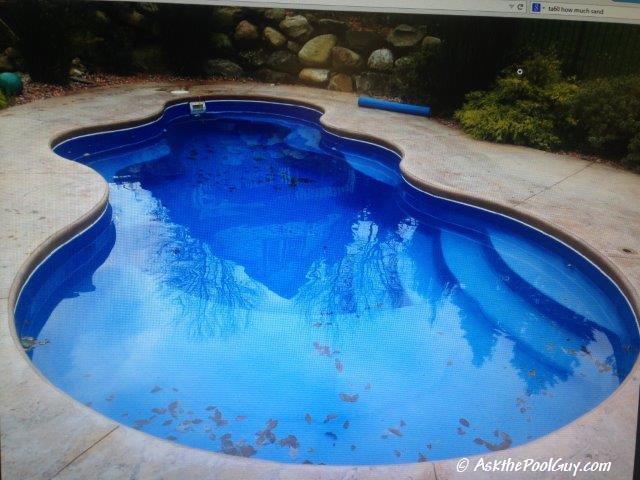
Fiberglass pools have been around for nearly 50 years. They are one piece, factory built shells made with fiberglass, resins, and then finished with a gel coating, a non-porous surface.
Fiberglass pools are available in many shapes and sizes with different lighting options to choose from. The coping can also be customized with tile, brick, or stone to make it more attractive. Although there will be no resurfacing or replacing of liners, proper weekly chemical and cleaning maintenance must be done to protect the gel coated finish.
Fiberglass Pool PROS
- Low maintenance: Fiberglass pools resist algae growth because of the gel coated finish. This means the cleaning times are faster and fewer repairs.
- Quick installation: Gunite and concrete can take as long as 2 months to install, whereas fiberglass pools have an average of 3-5 weeks.
- Non-abrasive surface: The gel coated surfac
 e is smooth to the touch for swimmers.
e is smooth to the touch for swimmers. - Built-in Seats and Steps: Most fiberglass pool designs have seating and all have steps incorporated into the shell of the pool.
- Selection: There are a wide variety of shapes and sizes to choose from with some manufacturers offering 40 different choices.
Fiberglass Pool CONS
- Limited shapes: The consumer is limited to the shapes and sizes offered by the fiberglass pool manufacturer because they are made by a mold.
- Width limit: The width of the pool shell can be no more than 16′ because of road shipping restrictions otherwise the cost will increase greatly.
- Higher initial cost: Fiberglass pools cost more up front initially, usually around $5k-$10k more than vinyl liner pools and around the same as concrete pools.
- Install/delivery damage: There is a potential for damage during the installation and moving of the fiberglass pool. The structures are very large and require a very experienced builder. Most damage occurs by an inexperienced builder during installation and delivery.
- Not created equal: Fiberglass pools all look new when they arrive in your backyard, but the consumer has no way of knowing how well the swimming pool was built. Researching the quality of the fiberglass shell (the surface and structural material,) is an important step in choosing your pool. The use of inferior materials may not show up for 5-10 years.
Never drain your fiberglass pool. It is designed remain full of water at all times. If it is drained improperly, the hydrostatic pressure could cause the structure to buckle or crack. Please contact your fiberglass pool installer or the manufacturer to drain the pool properly.
Fiberglass Pools – FAQS
Should I Drain a Fiberglass Pool?
